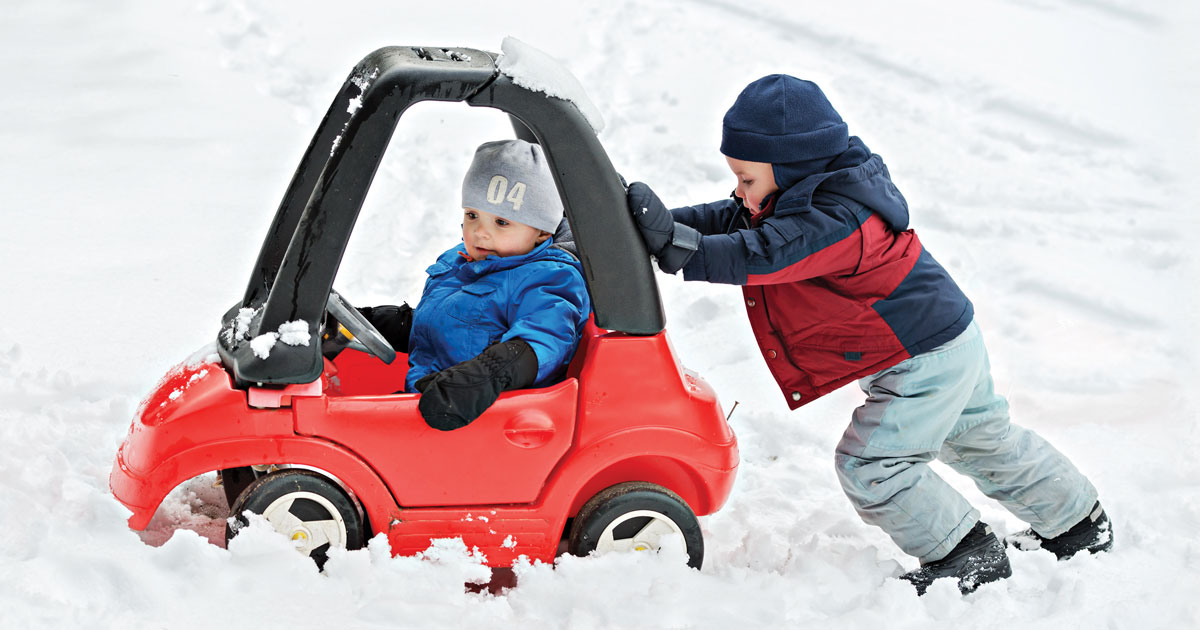BY ELISA WALLACE
When it comes to traveling during the winter months, a number of mishaps can happen. The winter months seem to have their own set of rules. Roads and highways can be slick and icy and it is vital to exercise extreme caution when on the roads. Even the smallest amount of ice and snow can make traveling hazardous, and it is smart to not even get on the roads during dangerous conditions.
However, there are times when traveling is necessary—for a work or a family event. In this case, read below for ten tips to help you win over treacherous road situations.
Tip #1: Always stay on main roads and avoid side roads. Many accidents often happen after people take side roads to avoid traffic. Since weather crews do not often get the chance to de-ice the less traveled roads, these can be extremely perilous. Avoid at all costs!
Tip #2: Drive only during daytime hours. When it comes to what time of day is the safest to travel, experts agree that driving during the day is the smartest bet. Driving after the sun goes down makes visibility extremely difficult. Even with the brightest headlights, it may be difficult to make out traffic signs and directions.
Tip #3: Always pack a separate bag for your car. In the off chance that you do get stranded, it is a wise decision to have a bag of extra clothes and blankets. These will all come in handy if you break down in cold weather. It doesn’t take much—a basic kit including weather-resistant pants, maybe an old pair of boots, warm blankets, flashlight with extra batteries, windshield scrapers, and jumper cables. It also can’t hurt to add a few protein bars and snacks that won’t spoil, like dried fruits and nuts.
Tip # 4: Make sure to get your car winter-ready. It is crucial to make sure your car is ready for long travel. If you know that you’re going on a long trip, make sure that the mechanic checks your tires, oil and other vital components of your car.
Tip #5: “See and be seen!” Follow this clever advice from Montana’s hard-working snowplow team. If you have to drive during hazardous conditions, make sure that you have your headlights and taillights clean before you set out. This way they can be seen in stormy weather. Keep windows clean as well, and make sure defrosters work well so you can see other drivers.
Tip # 6: Not all roads are alike. When driving, remember that some roads naturally are more dangerous than others. For example, many recently built small bridges and overpasses have been designed to blend into the surroundings, without a big change in elevation. These bridges are highly susceptible to icing over more rapidly than regular blacktop. Look out and look ahead for these short and small stretches of road when temperatures drop below freezing. Remember, these could have black ice.
Tip #7: Learn about black ice! Black ice forms when it’s raining and the air is at or below 32 degrees Fahrenheit at the surface, according to AccuWeather Senior Meteorologist Andrew Mussoline.
The ground temperature causes the precipitation to freeze upon impact, thus creating ice on black pavement. The only way to determine that the pavement you are driving on has black ice is to either drive a car that has thermometer sensors or know that black ice looks dark and glossy.
Tip #8: If stranded, run car every hour for ten minutes. One reason you should do this is to make sure the exhaust pipe is not obstructed by snow or mud. Another reason is to run the engine for heat. If you’re worried about running out of gas, you can keep the windows closed and run the car for 10 minutes every hour.
Tip #9: Kitty litter to the rescue! Some experts recommend having kitty litter close on hand to help when you come across an icy patch. When you have kitty litter, you can put it underneath the tires to help with traction. This is an easy remedy to help get your car out of an icy area.
Tip #10: Slow down! No matter what the event, nothing is so important that you need to risk your life or the lives of others by speeding. The U.S. Department of Transportation recommends slowing down by about 50 percent in bad weather; additionally, leave extra space between you and the car in front of you.


















